Though published in 1996, David Foster Wallace’s Infinite Jest appears to be the defining novel of the twenty-first century, both in the questions it raises and in the way it attempts to answer them. Infinite Jest arrived on the scene just as a dominant cultural narrative began to take hold with a vise grip, strangling all other ways of approaching human meaning. In her book Monoculture: How One Story is Changing Everything, F. S. Michaels points to the story of economic efficiency as the central narrative of our time, one that is supplanting all other ways of understanding human meaning and worth: “in the economic story, your best choice is always the most efficient choice” (11). In his essay “Farther Away,” fellow novelist and Wallace’s friend Jonathan Franzen also alludes to this all-encompassing narrative, arguing that Wallace’s purpose in Infinite Jest was to battle the “the monocultural specter” that haunts our age. But neither Michaels nor Franzen hits the target precisely when it comes to why this monoculture thrives: The driver of monoculture—the narrative of efficiency—is technology. Technology is the essential lifeblood in the pursuit of efficiency in the service of nothing but efficiency. Technological monoculture, the narrative of efficiency fueled by the Internet, threatens to eliminate our very reasons to be human if we do not recognize and embrace alternative narratives—and soon. Though Infinite Jest encompasses many topics, its lasting value lies in its attempt to provide alternative narratives to technological monoculture, the dominant narrative of the early twenty-first century.
Our best thinking has brought us technological monoculture—with all its consequences: surveillance, trolls, cyberbullies, obsession with efficiency, concentration of wealth, loss of gainful employment, loss of meaning. In their book All Things Shining: Reading the Western Classics to Find Meaning in a Secular Age, Hubert Dreyfus and Sean Dorrance Kelly, in their analysis of Wallace’s works, as well as others, reach the same conclusion: “...the improvements of technology are impoverishments as well. To have a skill is to know what counts as worthwhile in a certain domain....To the extent that it takes away the need for skill, technology flattens out human life” (213). They argue throughout the book that this flattening of life leads to nihilism, because “when we lose our knowledge of craft, the world looks increasingly devoid of distinctions of worth” (213). Their solution is a return to a mentored learning of craft (207), classically termed “poiesis” (206). This poiesis can manifest itself in many forms, one of which the reader will witness throughout this essay. Beginning in the spring of 2014, my eleven-year-old son, Sebastian, and I embarked on a five-month project in which we translated Infinite Jest into Legos. The project brought us back to craft, a way to immerse ourselves in a pursuit that was not based on a computer screen. The larger purpose was to make this tome of a novel more inviting to readers, who, even if they are part of a sympathetic crew of English majors, find the novel’s heft and intricacy daunting. We needed to do something a computer could not do—reconstruct a narrative using the language of actual things. We were, in a sense, following the imperative of Nicholas Carr, author of The Shallows: What the Internet is Doing to Our Brains: “We must have the self-awareness and the courage to refuse to delegate to computers the most human of our mental activities...particularly those tasks that demand wisdom” (208).
The result, Brickjest.com, succeeded beyond even our wildest expectations, as media outlets such as the Guardian, Salon.com, and hundreds of others picked up on the story. At one point, our website was getting over fifteen thousand hits a day. Two theories emerge to explain this viral explosion of interest. One, people are still interested in narratives that provide alternatives to technological monoculture. Clearly, the story of a father and son laboring through a project for no other reward than the love of just doing something together is a compelling narrative. Two, as Philip Sayers pointed out in his essay “Representing Entertainment in Infinite Jest,” the novel, ekphrastic in its own right, demands an artistic response. Once again, Wallace was ahead of the curve in his work, compelling us to be active creators, rather than submit to the passivity of the screen.
The success of Brickjest.com suggests that there is a craving for alternative narratives, approaches that paradoxically incorporate technology themselves as a way to fight the dominance of technology. But first, what is a narrative, and what is its relationship to technology? Media analyst Neil Postman defines it as “a story of human history that gives meaning to the past, explains the present, and provides guidance for the future” (173). In his book Technopoly, published way back in 1992 (a date that predates the Web and seems like something out of a technological Pliocene Epoch), Postman was the first to argue passionately for alternatives to the monocultural narrative, with “its implicit assumption that efficiency is the principal aim of all social institutions” (87). His term for the monocultural narrative is technopoly, in which “the culture seeks its authorization in technology, finds its satisfactions in technology, and takes its orders from technology” (71). Technopoly works aggressively “to eliminate alternatives to itself...” (57) by making those alternatives irrelevant. “And it does so by redefining what we mean by art, by family, by politics, by history, by truth, by privacy, by intelligence, so that our new definitions fit its new requirements” (57). Technology is a Bed of Procrustes, so to speak, as Nassim Nicholas Taleb points out in his book of the same name, cutting or stretching us, and forcing people to “[adjust] themselves to make a program look smarter” (Lanier, Who Owns 114). We must now stretch our definition of privacy because of social networks and their implicit assumption that they can take liberties with our personal data. We must redefine education by eliminating teachers and replacing them with an online alternative, and so on.
So how do we avoid lying in this terrible bed that our technological monoculture has made for us? And where does the novel fit in? Again, Postman: “A novelist…documents the behavior and feelings of people as they confront the problems posed by their culture” (153). Literature, especially novels of ideas like Infinite Jest, deals in “diversity, complexity, and ambiguity...” (Postman 158), traits that are “the enemies of technique. They mock statistics and polls and standardized tests and bureaucracies” (Postman 158). Whether novels will continue to matter, though, is not certain, as technological monoculture is rapidly rendering them irrelevant, especially novels of ideas. As Jordan Weissmann points out in his article “The Decline of the American Book Lover,” “The Pew Research Center reported last week that nearly a quarter of American adults had not read a single book in the past year. As in, they hadn’t cracked a paperback, fired up a Kindle, or even hit play on an audiobook while in the car. The number of non-book-readers has nearly tripled since 1978.” (Note that the Apple II was launched in 1977.) The decline in reading, though, is just a symptom of a larger disease, the cancerous effects of technological monoculture on any discipline or mode of thinking that resists using numerical data as a way to achieve meaning and results. Not surprisingly, along with the rise of social networking, with its complicated algorithmic metrics; and online education, with its tracking capabilities (Barnes), came increasing attacks on the viability and value of the humanities. Search “Humanities in Decline” and you will receive over four million hits, one of the first being the headline “Humanities’ Decline Makes Economic Sense.” (Could we have a clearer articulation of what technological monoculture is all about?)
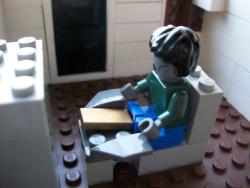 Infinite Jest grapples with the existential boredom created by technology, what Wallace biographer J. T. Max calls the “sad, senseless attempts by Americans to amuse themselves in the absence of any larger spiritual idea” (218). Max points out that “Infinite Jest is a brilliant extension of that preoccupation into the era of the Internet, with its manifold, overwhelming sources of image and information” (218). Remember that the central plot of Infinite Jest, if there is a central plot, is the attempt by Quebecois terrorists to obtain a copy of a film cartridge called Infinite Jest, a film so entertaining that the viewer becomes obsessed with watching it, refusing food and drink, enduring incredible pain when inflicted, until they literally die in front of the screen. The Quebecois terrorists are driven in their mission by hatred of the United States, now part of the Organization of North American Nations, or O.N.A.N. Mainly, the terrorists’ desire to destroy the US arises from US president Johnny Gentle’s “territorial redeploying” (Wallace 93) of a massive toxic waste site, The Great Concavity, onto the Canadian map, thus imposing most of its hazards, including hordes of feral hamsters (“they mean business” [Wallace 93]) and toxic garbage flung by enormous trebuchets (Wallace 241). The northernmost edge of the concavity lies at the Quebec border, and the toxins produced have caused a host of maladies, including gigantism and anencephaly (babies born with no skull). Thus the concavity is a void, but one in which maladies and disease rush to fill.
Infinite Jest grapples with the existential boredom created by technology, what Wallace biographer J. T. Max calls the “sad, senseless attempts by Americans to amuse themselves in the absence of any larger spiritual idea” (218). Max points out that “Infinite Jest is a brilliant extension of that preoccupation into the era of the Internet, with its manifold, overwhelming sources of image and information” (218). Remember that the central plot of Infinite Jest, if there is a central plot, is the attempt by Quebecois terrorists to obtain a copy of a film cartridge called Infinite Jest, a film so entertaining that the viewer becomes obsessed with watching it, refusing food and drink, enduring incredible pain when inflicted, until they literally die in front of the screen. The Quebecois terrorists are driven in their mission by hatred of the United States, now part of the Organization of North American Nations, or O.N.A.N. Mainly, the terrorists’ desire to destroy the US arises from US president Johnny Gentle’s “territorial redeploying” (Wallace 93) of a massive toxic waste site, The Great Concavity, onto the Canadian map, thus imposing most of its hazards, including hordes of feral hamsters (“they mean business” [Wallace 93]) and toxic garbage flung by enormous trebuchets (Wallace 241). The northernmost edge of the concavity lies at the Quebec border, and the toxins produced have caused a host of maladies, including gigantism and anencephaly (babies born with no skull). Thus the concavity is a void, but one in which maladies and disease rush to fill.
 The concavity is also, in my view, Wallace’s metaphor for the lacuna of meaning at the heart of technological monoculture. We see this emptiness all around. As Alex Soojung-Kim Pang, a former consultant with Microsoft, writes in his book Addicted to Distraction: “Living with computers changes how we think about ourselves, our intelligence, and our memories. And these changes have, by and large, been for the worse” (111). He asserts that “...chronic distractions erode your sense of having control over your life. They don’t just derail your train of thought. They make you lose yourself” (47). Undoubtedly, just as feral hamsters and giant babies roam Wallace’s concavity, malicious forces transverse the wasteland at the heart of our technological monoculture, threatening to make us lose ourselves: addiction, greed, and narcissism.
The concavity is also, in my view, Wallace’s metaphor for the lacuna of meaning at the heart of technological monoculture. We see this emptiness all around. As Alex Soojung-Kim Pang, a former consultant with Microsoft, writes in his book Addicted to Distraction: “Living with computers changes how we think about ourselves, our intelligence, and our memories. And these changes have, by and large, been for the worse” (111). He asserts that “...chronic distractions erode your sense of having control over your life. They don’t just derail your train of thought. They make you lose yourself” (47). Undoubtedly, just as feral hamsters and giant babies roam Wallace’s concavity, malicious forces transverse the wasteland at the heart of our technological monoculture, threatening to make us lose ourselves: addiction, greed, and narcissism.
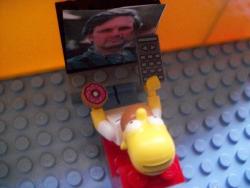 Infinite Jest concerns many forms of addiction, one of them being technology addiction. Recently, the New York Times revealed that major players in the tech field, including Steve Jobs himself, prohibited or strictly limited their children’s technology use, knowing full well of the dangers of addiction (Bolton). Digital addiction in South Korea, one of the world’s early adopters of wireless technology, has been a problem of epidemic proportions for years. In 2010, PBS released the documentary Digital Nation: Life on the Virtual Frontier, which investigated the growing computer addiction problems among South Korean teenage boys, who in the most serious cases must attend digital detox camps. And long before computers, there was television, the seductive power of which has been well documented over the past forty years, perhaps most notably so in Marie Winn’s polemic against television, The Plug-In Drug (1977). Interestingly, Wallace alludes to this arc of addictive viewing from television to the computer through his portrayal of the character Steeply’s reminiscence of his father’s obsession with M*A*S*H: “He died just before his birthday. He died in his easy chair, set at full Recline [sic], watching an episode in which Alda’s Hawkeye can’t stop sleepwalking...” (646). Steeply’s father’s demise (the character Marathe refers to it as “the final enclosing isolation of obsession” [645]), though it occurs much later in the book, previews how the Infinite Jest cartridge will provide the catalyst for mass-suicide-through-viewing.
Infinite Jest concerns many forms of addiction, one of them being technology addiction. Recently, the New York Times revealed that major players in the tech field, including Steve Jobs himself, prohibited or strictly limited their children’s technology use, knowing full well of the dangers of addiction (Bolton). Digital addiction in South Korea, one of the world’s early adopters of wireless technology, has been a problem of epidemic proportions for years. In 2010, PBS released the documentary Digital Nation: Life on the Virtual Frontier, which investigated the growing computer addiction problems among South Korean teenage boys, who in the most serious cases must attend digital detox camps. And long before computers, there was television, the seductive power of which has been well documented over the past forty years, perhaps most notably so in Marie Winn’s polemic against television, The Plug-In Drug (1977). Interestingly, Wallace alludes to this arc of addictive viewing from television to the computer through his portrayal of the character Steeply’s reminiscence of his father’s obsession with M*A*S*H: “He died just before his birthday. He died in his easy chair, set at full Recline [sic], watching an episode in which Alda’s Hawkeye can’t stop sleepwalking...” (646). Steeply’s father’s demise (the character Marathe refers to it as “the final enclosing isolation of obsession” [645]), though it occurs much later in the book, previews how the Infinite Jest cartridge will provide the catalyst for mass-suicide-through-viewing.
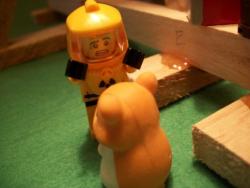 Death-by-viewing is a metaphor for the loss of self. Though the word “narcissism” never appears in Infinite Jest, as unbelievable as that sounds, the novel deals with it implicitly through the “videophony” section. Anticipating Skype and FaceTime, Wallace includes a cautionary tale in the novel about the advent of “VIDEO-TELEPHONING (A.K.A. ‘VIDEOPHONY’) (144), which, though initially popular, “SUDDENLY COLLAPSED LIKE A KICKED TENT (145), when callers became dismayed at how their own faces looked on the screen. In an absurd twist, “vanity-related stress” (148) compels consumers to wear increasingly life-like and attractive masks to hide their appearance, until they forgo the masks completely and use what are called Tableaux: “high-quality transmission-ready photographs [of attractive yet minor celebrities], scaled down to diorama-like proportions and fitted with a plastic holder over the videophone camera, not unlike a lens cap” (149).
Death-by-viewing is a metaphor for the loss of self. Though the word “narcissism” never appears in Infinite Jest, as unbelievable as that sounds, the novel deals with it implicitly through the “videophony” section. Anticipating Skype and FaceTime, Wallace includes a cautionary tale in the novel about the advent of “VIDEO-TELEPHONING (A.K.A. ‘VIDEOPHONY’) (144), which, though initially popular, “SUDDENLY COLLAPSED LIKE A KICKED TENT (145), when callers became dismayed at how their own faces looked on the screen. In an absurd twist, “vanity-related stress” (148) compels consumers to wear increasingly life-like and attractive masks to hide their appearance, until they forgo the masks completely and use what are called Tableaux: “high-quality transmission-ready photographs [of attractive yet minor celebrities], scaled down to diorama-like proportions and fitted with a plastic holder over the videophone camera, not unlike a lens cap” (149). 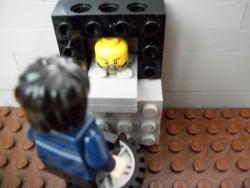 In a case of life imitating art to the most grotesque degree, in a way that even Wallace couldn’t comprehend, the Huffington Post noted in 2012 the phenomenon of the “FaceTime Facelift: The Plastic Surgery Procedure For iPhone Users Who Don’t Like How They Look On FaceTime.” Forget masks. People are willing to alter their very flesh for the sake of the computer’s eye.
In a case of life imitating art to the most grotesque degree, in a way that even Wallace couldn’t comprehend, the Huffington Post noted in 2012 the phenomenon of the “FaceTime Facelift: The Plastic Surgery Procedure For iPhone Users Who Don’t Like How They Look On FaceTime.” Forget masks. People are willing to alter their very flesh for the sake of the computer’s eye.
Does Infinite Jest offer a way out from the concavity at the center of technological monoculture? Three possible exits emerge: Consumer Recidivism, Empathy, and God.
Consumer Recidivism
Capitalism cannot survive without consumers, and no matter how concentrated wealth becomes, there still must be those who buy products and services. As the cliché goes, the market is subject to consumers’ tastes and whims, so one possible salvation from computer-driven technological monoculture lies in consumers’ tastes shifting. Though, as Postman has pointed out, “Everyone is inclined to be enthusiastic about technological change, believing that its benefits will spread throughout the culture” (11), all enthusiasm dwindles over time. The “videophony” section in Infinite Jest (144-51) provides much insight into how the ebb and flow of consumer demand may allow an escape. To summarize, video-telephoning, or “videophony” was developed in the “early days of Interlace’s internet computers” (Wallace 144) to huge popularity. But, because of “(1) emotional stress, (2) physical vanity, (3) a certain queer kind of self-obliterating logic in the micro-economics of consumer high-tech” (145), the popularity fades rapidly, and most consumers return to the retro voice-only phones. What we are interested in here is the “self-obliterating logic” of consumer high-tech that Wallace refers to. Wallace eloquently describes the rise and fall of tech advances, the fall inevitably caused by “consumer-recidivism.” His analysis of videophony’s rise and fall is worth quoting in full:
But there’s some sort of revealing lesson here in the beyond-short-term viability-curve of advances in consumer technology. The career of videophony conforms neatly to this curve’s classically annular shape: First there’s some sort of terrific, sci-fi like advance in consumer tech—like from aural to video phoning—which advance always, however, has certain unforeseen disadvantages for the consumer; and then but the market niches created by those disadvantages—like people’s stressfully vain repulsion at their own videophonic appearance—are ingeniously filled via sheer entrepreneurial verve; and yet the very advantages of these ingenious disadvantage compensations seem all too often to undercut the original high-tech advantage, resulting in consumer-recidivism and curve closure and massive shirt loss for precipitant investors. (150)
We find examples of this “short-term viability curve” with many “sci-fi like advances” in technology. Consider eBooks—initially they were championed as the next big thing, the most seismic shift in literacy since Gutenberg. In fact, business consultant Michael Hyatt predicted in 2007 that print books would die and included a Photoshopped rendition of a tombstone with the inscription, “Rest in Peace/The Book/1463-2008.” Yet Forbes reported in 2013 that sales of hardcover books were outpacing eBooks (Greenfield).
And online education? Unforeseen disadvantages are now driving the main consumers of online education—colleges and universities—out of the game. What is truly sad is that “MOOCs have yet to demonstrate much benefit at all, even on their own terms” (Deresiewicz 187). For instance, Ithaka S+R, one of the leading consulting firms in integrating online learning—an agency with an implicit stake in promoting the virtues of online learning—reached the following conclusions in recent studies: “We do not have conclusive evidence of how use of these technologies on a large scale would impact costs” (Griffiths, et al 29). Sebastian Thurn, founder and CEO of Udacity, has admitted that his online classes are often a “lousy product” (Schuman) and is moving on to other projects.
Empathy
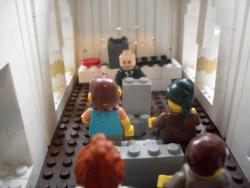 Consumer Recidivism can put a stop to tech fetishing, but it doesn’t do much for meaning. Empathy is at the heart of Infinite Jest: “Since reader’s empathy depends heavily on identification with a narrative, it is perhaps not surprising that...Wallace frequently embeds representations of empathizing characters” (Staes 414). Recent studies in neuroscience confirm that increased empathy is at the heart of novels in general: “Reading great literature, it has long been averred, enlarges and improves us as human beings. Brain science shows this claim is truer than we imagined” (Paul). Technological monoculture works very hard to erase empathy—as it is almost always the enemy of efficiency. If we can reduce people to numbers on a prepopulated form or assimilate nuanced human understanding into “big data,” we are one step closer to erasing empathy. As Lanier states, “The first big tenet of this new culture is that all of reality, including humans, is one big information system” (You are Not a Gadget 27). He further asserts that in this technological monoculture we must work hard “to be a person instead of a source of fragments to be exploited by others” (You are Not a Gadget 21).
Consumer Recidivism can put a stop to tech fetishing, but it doesn’t do much for meaning. Empathy is at the heart of Infinite Jest: “Since reader’s empathy depends heavily on identification with a narrative, it is perhaps not surprising that...Wallace frequently embeds representations of empathizing characters” (Staes 414). Recent studies in neuroscience confirm that increased empathy is at the heart of novels in general: “Reading great literature, it has long been averred, enlarges and improves us as human beings. Brain science shows this claim is truer than we imagined” (Paul). Technological monoculture works very hard to erase empathy—as it is almost always the enemy of efficiency. If we can reduce people to numbers on a prepopulated form or assimilate nuanced human understanding into “big data,” we are one step closer to erasing empathy. As Lanier states, “The first big tenet of this new culture is that all of reality, including humans, is one big information system” (You are Not a Gadget 27). He further asserts that in this technological monoculture we must work hard “to be a person instead of a source of fragments to be exploited by others” (You are Not a Gadget 21).
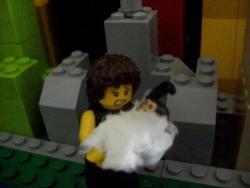 In Infinite Jest, the members of Ennet House, the recovery center, are required to attend area AA meetings, in which they must “Identify, instead of Compare. Again, Identify means empathize” (345). The AA meetings offer up one example after another of characters who force readers to “engage intellectually and emotionally with the text” (Keen, qtd. In Staes 415). And the human condition is not pretty. Two former strippers tell tales of such grotesque abuse and addiction that readers’ credulity may be strained. The first tells of being forced to be a stripper and crack addict at sixteen to escape a situation in which her abusive father repeatedly sexually molested her adopted sister, severely disabled and defenseless, by placing a rubber Raquel Welch mask over her head and having intercourse with her (371). Former stripper number two tells the story of “being pregnant at twenty and smoking Eightballs of freebase cocaine like a fiend all through her pregnancy” (376) and then giving birth on the rug in a welfare-hotel room to a dead faceless infant that she carries around in a blanket for weeks until “word that there was a serious infant-and-Denial problem here got around the streets” (377). At the end of her confession, Wallace notes that the audience listening to the stripper “all sat still and listened without blinking, looking not just at the speaker’s face but into it...” (379).
In Infinite Jest, the members of Ennet House, the recovery center, are required to attend area AA meetings, in which they must “Identify, instead of Compare. Again, Identify means empathize” (345). The AA meetings offer up one example after another of characters who force readers to “engage intellectually and emotionally with the text” (Keen, qtd. In Staes 415). And the human condition is not pretty. Two former strippers tell tales of such grotesque abuse and addiction that readers’ credulity may be strained. The first tells of being forced to be a stripper and crack addict at sixteen to escape a situation in which her abusive father repeatedly sexually molested her adopted sister, severely disabled and defenseless, by placing a rubber Raquel Welch mask over her head and having intercourse with her (371). Former stripper number two tells the story of “being pregnant at twenty and smoking Eightballs of freebase cocaine like a fiend all through her pregnancy” (376) and then giving birth on the rug in a welfare-hotel room to a dead faceless infant that she carries around in a blanket for weeks until “word that there was a serious infant-and-Denial problem here got around the streets” (377). At the end of her confession, Wallace notes that the audience listening to the stripper “all sat still and listened without blinking, looking not just at the speaker’s face but into it...” (379).
 One doesn’t have to look hard to find other characters who are all-too-human in their addictions, disabilities, and failings. Marijuana addicts like Hal Incandenza, Ken Erderdy, and Kate Gompert underscore the debilitating effects of what many think a benign drug; Joelle Van Dyne, aka “Madame Psychosis,” wears a veil to reveal the paradoxical trauma of either being too beautiful—a P.G.O.A.T. (the “Prettiest Girl of All Time” [249])—or too ugly (as she may have been deformed by acid tossed into her face, she is also a member of the U.H.I.D., the “Union of the Hideously and Improbably Deformed” [187]); cocaine-addict Randy Lenz compensates for the lack of his food-addicted, severely obese mother’s love by suffocating cats (541). Perhaps the most extreme case is the wife of Marathe. Marathe, who is himself legless from an intentional run-in with a train (1058), is a quadruple agent of the Wheelchair Assassins, pretending to pretend to betray the AFR to secure medical support for his wife (who was born without a skull) from the Bureau of Unspecified Services. Late in the novel, Marathe, posing as a Swiss member of the U.H.I.D. by wearing a veil to gain access to Ennet House, has an exchange with Kate Gompert in which he discusses how he and his wife met: “...without thinking I release my brake and I am careening down the downhill…and as we say in Switzerland I schüssch at enough speed to reach my wife and sweep her up into the chair...just ahead of the nose of the truck...” (778). This act of selflessness, he tries to explain to Gompert, was not above saving someone else’s life, but his own: “You are not seeing this. It was this frozen with the terror woman, she saved my life. For this saved my life. This moment broke my moribund chains, Katherine” (778). Marathe is the narcissist’s enemy, truly trying to live out the mantra “You are what you love.”
One doesn’t have to look hard to find other characters who are all-too-human in their addictions, disabilities, and failings. Marijuana addicts like Hal Incandenza, Ken Erderdy, and Kate Gompert underscore the debilitating effects of what many think a benign drug; Joelle Van Dyne, aka “Madame Psychosis,” wears a veil to reveal the paradoxical trauma of either being too beautiful—a P.G.O.A.T. (the “Prettiest Girl of All Time” [249])—or too ugly (as she may have been deformed by acid tossed into her face, she is also a member of the U.H.I.D., the “Union of the Hideously and Improbably Deformed” [187]); cocaine-addict Randy Lenz compensates for the lack of his food-addicted, severely obese mother’s love by suffocating cats (541). Perhaps the most extreme case is the wife of Marathe. Marathe, who is himself legless from an intentional run-in with a train (1058), is a quadruple agent of the Wheelchair Assassins, pretending to pretend to betray the AFR to secure medical support for his wife (who was born without a skull) from the Bureau of Unspecified Services. Late in the novel, Marathe, posing as a Swiss member of the U.H.I.D. by wearing a veil to gain access to Ennet House, has an exchange with Kate Gompert in which he discusses how he and his wife met: “...without thinking I release my brake and I am careening down the downhill…and as we say in Switzerland I schüssch at enough speed to reach my wife and sweep her up into the chair...just ahead of the nose of the truck...” (778). This act of selflessness, he tries to explain to Gompert, was not above saving someone else’s life, but his own: “You are not seeing this. It was this frozen with the terror woman, she saved my life. For this saved my life. This moment broke my moribund chains, Katherine” (778). Marathe is the narcissist’s enemy, truly trying to live out the mantra “You are what you love.”
Marathe and the cross-dressing B.S.S. agent Steeply’s dialogues on freedom and choice comprise a good chunk of the novel. Essentially, unlimited choice has the negative consequence of turning us into “the slave who believes he is free. The most pathetic of bondage” (108). Our most fundamental choice in the technological monoculture is the self, and as Marathe says, we are all worshipers at the temple of the self: “You are by yourself and alone. Kneeling to yourself” (108). Marathe literally risks his life to transcend his life. He is willing to lay down his life for the sake of another. Wallace does not ask readers to do the same, though he does ask us to witness human catastrophes so blatantly grotesque, nauseating, and humiliating that it is hard for us not to turn our eyes away from the page. Perhaps these grotesqueries exist for “redemptive purposes” (Nichols) to jar us out of our narcissistic shells. For remember that the economy driven by technological monoculture depends on our narcissism to provide its raw materials.
God
Of course, the elephant in the room is God. As Stephen Burns emphasized in his book A Reader’s Guide to Infinite Jest, one of the first academic treatments of the novel, “Infinite Jest may basically be a religious book. Although this might seem unlikely, it is clear that, on one level, the novel is about belief” (63). Burns does not pursue this idea much, perhaps because to engage in any discussion of the Bible, God, or religion is to immediately enter the ranks of the tragically academically unhip—or worse. As D. T. Max has written, Wallace did indeed consider converting to Catholicism, and was not ashamed to pray, but “Wallace’s real religion was always language anyway” (166). Whether Wallace, as Max argues, chose ultimately to worship at the altar of grammar is open to question, but could anyone really argue that everything Marathe says in his discussions with Steeply boils down to this: “Do nothing out of selfishness or vainglory; rather, humbly regard others as more important than yourselves, each looking out not for his own interests, but those of others” (Phil. 2:3)? Exhortations to put others’ interests before one’s own are ubiquitous in the New Testament, and especially the Book of Matthew.
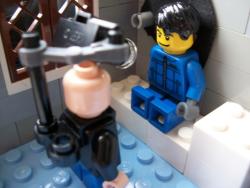 Brickjest.com allows readers to examine the novel itself for answers. Through its disruptive rendering of key scenes in brick form, it can reposition the novel as a key medium in making meaning in our lives. Rather than shrugging our shoulders and allowing technological monoculture to wash away novels of ideas, we can use technology as a way to invite readers back. Consider the progression of our understanding of God in the novel. We can see the progression of belief as we navigate through the pages of Infinite Jest. Early in the novel, during a nighttime discussion between Hal Incandenza and his brother Mario, Hal responds to his brother’s inquiries about his belief in God this way: “...I have administrative bones to pick with God, Boo. I’ll say God seems to have a kind of laid-back management style I’m not crazy about. I’m pretty much anti-death. God looks by all accounts to be pro-death” (40). Despite his supposed genius status, Hal is more or less articulating a basic religious cliché—if God is so great, how can he allow bad things to happen to good people? Later, the attitude expressed in the novel changes, as the previously pro-death God, the subject of jokes, now becomes the catalyst in the transformation of the addicted into the healed. Somehow, in the context of recovery groups, praying to God matters: “…AA and NA and CA’s ‘God’ does not apparently require that you believe in Him/Her/It before He/She/It will help you” (201). In the footnote to that quote, Wallace states that “[i]n none of these Anonymous fellowships anywhere is it possible to avoid confronting the God stuff, eventually” (998). As snarky as that sounds, “confronting the God stuff” may be what is necessary to pull us out of the addictive narcissism at the center of technological monoculture.
Brickjest.com allows readers to examine the novel itself for answers. Through its disruptive rendering of key scenes in brick form, it can reposition the novel as a key medium in making meaning in our lives. Rather than shrugging our shoulders and allowing technological monoculture to wash away novels of ideas, we can use technology as a way to invite readers back. Consider the progression of our understanding of God in the novel. We can see the progression of belief as we navigate through the pages of Infinite Jest. Early in the novel, during a nighttime discussion between Hal Incandenza and his brother Mario, Hal responds to his brother’s inquiries about his belief in God this way: “...I have administrative bones to pick with God, Boo. I’ll say God seems to have a kind of laid-back management style I’m not crazy about. I’m pretty much anti-death. God looks by all accounts to be pro-death” (40). Despite his supposed genius status, Hal is more or less articulating a basic religious cliché—if God is so great, how can he allow bad things to happen to good people? Later, the attitude expressed in the novel changes, as the previously pro-death God, the subject of jokes, now becomes the catalyst in the transformation of the addicted into the healed. Somehow, in the context of recovery groups, praying to God matters: “…AA and NA and CA’s ‘God’ does not apparently require that you believe in Him/Her/It before He/She/It will help you” (201). In the footnote to that quote, Wallace states that “[i]n none of these Anonymous fellowships anywhere is it possible to avoid confronting the God stuff, eventually” (998). As snarky as that sounds, “confronting the God stuff” may be what is necessary to pull us out of the addictive narcissism at the center of technological monoculture.
God is “unsearchable” (Rom. 11:33). 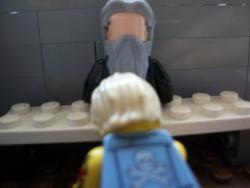 God is the anti-Google, the anti-distraction, allowing us the liberty to focus all our addiction on one thing—praying to him/she/it. The novel’s arc from skepticism to acceptance becomes clear during a discussion between Gately and Joelle, in which Joelle recounts the story of a counselor who “had this condition where each leg was shorter than the other” (533). When Gately asks how this is possible, Joelle responds, “He said the point was an AA point, that it defied sense and explaining and you just had to accept it on faith” (533). In our secular age, we want to believe that technology and logic have obviated the necessity for religious conviction, that the best and brightest among us will always figure a way out of any problem, no matter how large. But remember that the mantra of AA is “My best thinking got me here” (1026).
God is the anti-Google, the anti-distraction, allowing us the liberty to focus all our addiction on one thing—praying to him/she/it. The novel’s arc from skepticism to acceptance becomes clear during a discussion between Gately and Joelle, in which Joelle recounts the story of a counselor who “had this condition where each leg was shorter than the other” (533). When Gately asks how this is possible, Joelle responds, “He said the point was an AA point, that it defied sense and explaining and you just had to accept it on faith” (533). In our secular age, we want to believe that technology and logic have obviated the necessity for religious conviction, that the best and brightest among us will always figure a way out of any problem, no matter how large. But remember that the mantra of AA is “My best thinking got me here” (1026).
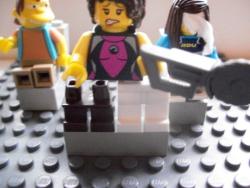 What the proponents of efficiency at all costs do not seem to understand, though, is even if their ultimate aim is achieved, then what? Even if the proponents of technologically driven efficiency believe discussions of meaning—or lack thereof—quaint, frivolously philosophical, or irrelevant, one has to wonder whether they have considered the kind of world they will create. If because of technology we can now run a company or university with a dozen people, when in the past we needed hundreds—or even thousands—where do all those displaced workers go? Do they cobble together three or four part-time jobs with few benefits so they can eke out an existence? Are they employed as a part of a massive private security force whose main goal is to protect the wealthy? The kind of dystopian future we may be heading toward might not be all that different from the one portrayed in Infinite Jest, in which terrorists who hate our way of life—in the novel’s case, terrorists from Quebec—finish us off by exploiting our own entertainment-obsessed weaknesses.
What the proponents of efficiency at all costs do not seem to understand, though, is even if their ultimate aim is achieved, then what? Even if the proponents of technologically driven efficiency believe discussions of meaning—or lack thereof—quaint, frivolously philosophical, or irrelevant, one has to wonder whether they have considered the kind of world they will create. If because of technology we can now run a company or university with a dozen people, when in the past we needed hundreds—or even thousands—where do all those displaced workers go? Do they cobble together three or four part-time jobs with few benefits so they can eke out an existence? Are they employed as a part of a massive private security force whose main goal is to protect the wealthy? The kind of dystopian future we may be heading toward might not be all that different from the one portrayed in Infinite Jest, in which terrorists who hate our way of life—in the novel’s case, terrorists from Quebec—finish us off by exploiting our own entertainment-obsessed weaknesses. 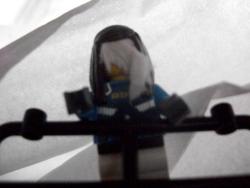 Since 9/11, an event one would think would have been a major wake-up call in the whole “meaning of life” department, technological monoculture has done nothing but gain momentum. Technology’s efficiency “saves” us by rendering obsolete the very things that made life worth living. Infinite Jest cartridge, the samizdat the terrorists seek because it is fatally addictive, is a “crib’s-eye view” (939) of Joelle leaning over the railing, saying “I’m sorry” over and over again. Perhaps one of the lessons learned from a brick interpretation of Infinite Jest is that we can begin to resist technological monoculture from the inside out, using the Internet itself to display the craft of hand necessary to invite readers back into a novel that strives to make us human again.
Since 9/11, an event one would think would have been a major wake-up call in the whole “meaning of life” department, technological monoculture has done nothing but gain momentum. Technology’s efficiency “saves” us by rendering obsolete the very things that made life worth living. Infinite Jest cartridge, the samizdat the terrorists seek because it is fatally addictive, is a “crib’s-eye view” (939) of Joelle leaning over the railing, saying “I’m sorry” over and over again. Perhaps one of the lessons learned from a brick interpretation of Infinite Jest is that we can begin to resist technological monoculture from the inside out, using the Internet itself to display the craft of hand necessary to invite readers back into a novel that strives to make us human again.
Dr. Kevin Griffith is a professor of English at Capital University and professor of Legal Writing at Capital Law School. He is the author of three books of poetry: Someone Had to Live (1994), Paradise Refunded (1999), and Denmark, Kangaroo, Orange (2008). He is also the author of 101 Kinds of Irony (2012), a collection of fiction, and the editor of The Common Courage Reader: Essays for an Informed Democracy (2001). He has published more than a dozen short stories in such magazines as Hotel Amerika, Spectrum, the Mid-American Review, the Coachella Review, and others. He and his son achieved worldwide fame in late 2014 with the release of www.Brickjest.com, a website featuring their recreation of David Foster Wallace’s novel Infinite Jest in Legos. Stories about the website have been featured in dozens of major newspapers and magazines throughout the world.
Works Cited
Barnes, Khaliah. “Student Data Collection is Out of Control.” New York Times. New York Times. 25 Sept. 2014. Web. 1 Oct. 2014.
Bolton, Nick. “Steve Jobs was a Low-Tech Parent.” New York Times. New York Times. 10 Sept. 2014. Web. 1 Oct. 2014.
Burn, Stephen. David Foster Wallace’s Infinite Jest: A Reader’s Guide. 2nd ed. New York: Continuum, 2012.
Carr, Nicholas. The Shallows: What the Internet is Doing to Our Brains. New York: Norton, 2010.
Deresiewicz, William. Excellent Sheep: The Miseducation of the American Elite & The Way to a Meaningful Life. New York: Free Press, 2014.
“Digital Nation: Life on the Virtual Frontier.” Frontline. PBS. 2 Feb. 2010. Television.
Dreyfus, Hubert, and Sean Dorrance Kelly. All Things Shining: Reading the Western Classics to Find Meaning in a Secular Age. New York: Free Press, 2011.
Franzen, Jonathan. “Farther Away: Robinson Crusoe, David Foster Wallace, and the Island of Solitude.” New Yorker. The New Yorker. 18 April 2011. Web. 6 Oct. 2014.
Gilbert, Jason. “FaceTime Facelift: The Plastic Surgery Procedure For iPhone Users Who Don’t Like How They Look On FaceTime.” Huffingtonpost.com. AOL. 27 Feb. 2012. Web. 1 Oct. 2014.
Greenfield, Jeremy. “Hardcover Sales Growth Outpacing Ebooks in 2013.” Forbes.com. 19 Nov. 2013. Web. 1 Oct. 2014.
Griffith, Kevin, and Sebastian Griffith. Brickjest.com. Web. March 2015.
Griffiths, Rebecca, et al. Interactive Online Learning on Campus: Testing MOOCs and Other Platforms in Hybrid Formats in the University System of Maryland. New York: Ithaka S+R. 2014.
Hyatt, Michael. “Why Traditional Books Will Eventually Die.” Michaelhyatt.com. N.p., n.d. Web. 1 Oct. 2014.
Keen, Suzanne. Empathy and the Novel. Oxford and New York: Oxford UP, 2007.
Lanier, Jaron. Who Owns the Future. New York: Simon & Schuster, 2013.
—. You Are Not A Gadget: A Manifesto. New York: Vintage, 2011.
Max, D. T. Every Love Story is a Ghost Story: A Life of David Foster Wallace. New York: Viking, 2012.
Michaels, F. S. Monoculture: How One Story is Changing Everything. Canada: Red Clover Press, 2011.
Nichols, Catherine. “Dialogizing Postmodern Carnival: David Foster Wallace’s Infinite Jest.” Critique 43:1 (2001): 3-17.
Paul, Annie Murphy. “Your Brain on Fiction.” New York Times. New York Times. 17 Mar. 2012. Web. 1 Oct. 2014.
Postman, Neil. Technopoly: The Surrender of Culture to Technology. New York: Vintage, 1993.
Sayers, Philip. “Representing Entertainment in Infinite Jest.” David Foster Wallace and ‘the Long Thing’: New Essays on the Novels. Marshall Boswell, ed. New York: Bloomsbury, 2014. 107-25.
Soojung-Kim Pang, Alex. The Distraction Addiction: Getting the Information You Need and the Communication You Want without Enraging Your Family, Annoying Your Colleagues, and Destroying Your Soul. New York: Little, Brown, 2013.
Staes, Toon. “Rewriting the Author: A Narrative Approach to Empathy in Infinite Jest and The Pale King. Studies in the Novel 44.1 (2012): 409-27.
Taleb, Nassim Nicholas. The Bed of Procrustes: Philosophical and Practical Aphorisms. New York: Random House, 2010.
Wallace, David Foster. Infinite Jest. New York: Little, Brown, 2006.
Weissmann, Jordan. “The Decline of the American Book Lover.” The Atlantic.com. Atlantic Monthly Group. Jan. 2014. Web. 1 Oct. 2014.
Winn, Marie. The Plug-In Drug: Television, Computers and Family Life. New York: Penguin, 2002.

Add new comment